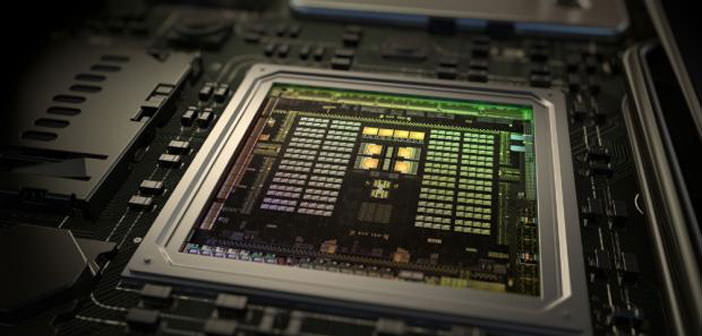Announced the new generation of chips for mobile systems NVIDIA: Tegra X1 doubles the performance for the same consumption than Tegra K1 and aims not only to tablets but also to the rich automotive sector.
Tegra X1 is the name of the new chip from NVIDIA proposed and announced yesterday evening in conjunction with the CES 2015 in Las Vegas.
The American company, for several years now, it is usual to use the Sunday before the opening of CES as the venue for a press conference for the announcement of new products and this year is no exception. Nothing GeForce, those will have to wait a few weeks, but attention to products intended for mobile systems.
Tegra X1, formerly known by the code name of Erista, uses 8-core CPU architecture with a big approach. LITTLE (then 4 core high power flanked by 4 cores with lower consumption); cores with higher power are ARM Cortex A57, flanked by four core A53 low consumption. It is a major structural change than previous generations of Tegra chips, which have always seen four core high power supported by a single core low consumption.
As for the GPU component, we find a solution Maxwell with 256 stream processors, then clear evolution compared with 192 stream processors with Kepler architecture integrated into the predecessor Tegra K1. The integrated video engine is capable, as stated by NVIDIA, to handle video streams in standard 4K up to 60 frames per second.
The chip is built using production technology to 20 nanometers, capable of a maximum TDP of 10 Watt. This is an absolute value not contained thinking about a chip for mobile systems, but according to when declared by NVIDIA is aligned with that of the chip Tegra K1 currently on the market despite a doubling of speed performance overall.
In comparison with the chip Apple A8X, used by the american in tablet iPad Air 2, Tegra X1 manages to record speed performance that are higher by 50% or more with some of the key tests for mobile systems (GFXBench, 3DMark and BasemarkX).
Announcement at CES does not imply immediate availability of products based on new SoC, as always happens in these cases. It will be over the next few months we will see ads from manufacturers of tablets, and other mobile devices will have chosen to use Tegra X1. Possible that some information in this direction can already get to coincide with the Mobile World Congress in Barcelona, scheduled for early March.
This is also why NVIDIA showed a first implementation of Tegra X1 with NVIDIA Drive CX, a solution specifically developed for the automotive world that implements this SoC to manage all the information of the dashboard of your vehicle with a wealth of graphical detail is not reached at the present time. NVIDIA has a recent history in these area thanks to the partnership with Audi, which has used previous generations of Tegra SoC to handle the information shown in the dashboard of their car models.
Another product is NVIDIA Drive PX, a solution that combines two Tegra chip X1 to 12 inputs for cameras so as to provide a system of the automated driving car. The approach used by NVIDIA is based on the so-called deep neural network computer vision, able to be much more accurate in the surveys compared to conventional sensors.
More than for automated driving system currently seems more suited to handle advanced systems for automated parking, able to park the car not only in narrow spaces but also to check whether the parking provision may be actually used by our car or whether it is subject to special permissions.
Implementation’s very interesting ones proposed by NVIDIA in the automotive sector, surely at least initially limited to a few and expensive cars, but that let you easily understand where contamination is in place between consumer electronics and the automotive industry to make more efficient, comfortable and safe cars of the future.




